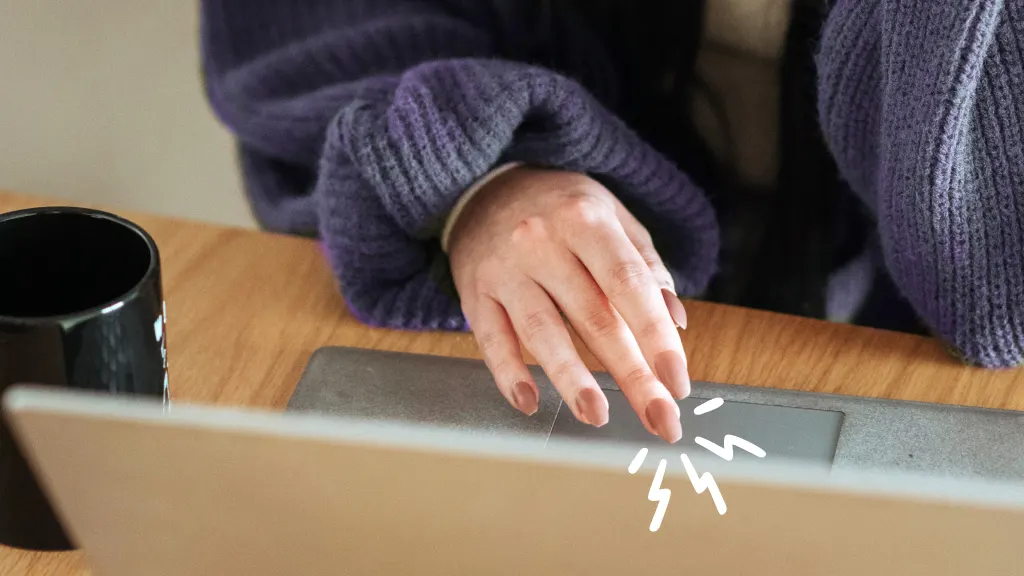If you’ve found yourself stuck with an unresponsive laptop touchpad, don’t panic! Touchpad issues are fairly common and can arise from a variety of causes. Whether your cursor is erratic, gestures suddenly stop working, or the entire touchpad seems to have given up, there are practical steps to take to fix the problem.
This article covers why your touchpad might not be working and explores solutions that will help you get back in control.
Common Reasons Your Touchpad Isn’t Working
Here’s a quick rundown of common touchpad issues many laptop users experience and their potential causes.
- Completely Unresponsive Touchpad: This might occur due to a disabled touchpad function, hardware issues, or outdated drivers.
- Erratic or Intermittent Cursor: A dirty or damaged touchpad surface, or external interference, could be to blame.
- Disabled Touchpad: Accidentally turning off the touchpad via a function key is incredibly common.
- Scrolling or Gesture Issues: Sometimes the touchpad gestures fail due to software settings or driver problems.
- Driver Problems: Outdated or corrupt drivers might prevent the touchpad from functioning properly.
Step-by-Step Troubleshooting Guide
Work through these solutions to troubleshoot your unresponsive touchpad.
1. Check if the Touchpad is Disabled
Accidentally disabling the touchpad is a common occurrence. Most laptops allow you to toggle it on or off with a specific function key (look for an icon resembling a touchpad). Press Fn + [Touchpad Key] to toggle it back on.
If you’re unsure which key to use, check your laptop’s user manual or look up instructions based on your model.
2. Restart Your Laptop
It’s a simple solution, but restarting your laptop can fix minor software glitches that might be interfering with the touchpad functionality. Make sure to save your work before rebooting to avoid data loss.
3. Update or Reinstall Drivers
Outdated or corrupt drivers are a frequent culprit when it comes to touchpad issues. To address this, follow these steps:
- Open Device Manager (Press Win + X, then select Device Manager).
- Expand the Mice and Other Pointing Devices section.
- Right-click on your touchpad and choose Update Driver. If that doesn’t work, select Uninstall Device, then restart your laptop. Windows should reinstall the driver automatically.
Alternatively, visit your laptop manufacturer’s website to download and install the latest drivers for your touchpad.
4. Adjust Touchpad Settings
Sometimes touchpad problems occur due to sensitivity or configuration settings. Here’s how to adjust them:
- Go to Settings > Devices > Touchpad (or use Control Panel on older Windows versions).
- Review touchpad settings to verify scrolling, gestures, and sensitivity are properly configured.
- If you find the touchpad is still disabled, check for options to enable it.
5. Ensure the Touchpad Surface Is Clean and Dry
Dust, grease, or moisture on the touchpad can cause unresponsiveness or erratic cursor movement.
- Turn off your laptop and clean the touchpad surface with a soft, slightly damp cloth.
- Make sure it’s completely dry before turning the laptop back on.
6. Scan for Malware
Certain malware types can cause disruptions in your computer’s hardware functionality.
- Use a trusted antivirus or antimalware program to run a system scan.
- Remove any detected threats and restart your laptop.
7. Test with an External Mouse
If none of the above solutions work, connect an external USB mouse to your laptop.
- If the external mouse works properly, the issue could be hardware-related, pointing to a faulty touchpad.
- At this point, consider contacting a professional technician or your laptop’s manufacturer for repairs.
Tips for Maintaining a Functional Touchpad
To avoid similar issues in the future, follow these tips for maintaining a healthy, functional touchpad.
- Keep Drivers Updated: Regularly check for driver updates to ensure compatibility and smooth performance.
- Handle the Touchpad with Care: Avoid applying excessive pressure or using sharp objects on the touchpad surface.
- Protect Software Integrity: Keep your system secure by installing updates and using reliable antivirus software.
- Know the Shortcut Keys: Familiarize yourself with your laptop’s shortcut keys to quickly enable or disable the touchpad as needed.
When All Else Fails
If you’ve exhausted these troubleshooting steps and your touchpad is still not functioning, it may indicate a hardware issue. You can reach out to your laptop manufacturer’s support team for further help or take your device to a certified technician. Repairs or replacements may be necessary if the touchpad hardware itself is damaged.
Wrapping Up
Touchpad issues, while frustrating, are often resolvable with a bit of troubleshooting. From checking keyboard shortcuts to updating drivers or ensuring the surface is free of interference, these solutions can address most scenarios.
Still struggling? It might be time to seek professional repair services. Don’t forget, knowledge of simple fixes can save you time and trips to the repair shop in the future.
Have you encountered touchpad issues before? Share what worked for you in the comments or pass this article along to help someone else resolve their touchpad woes.








